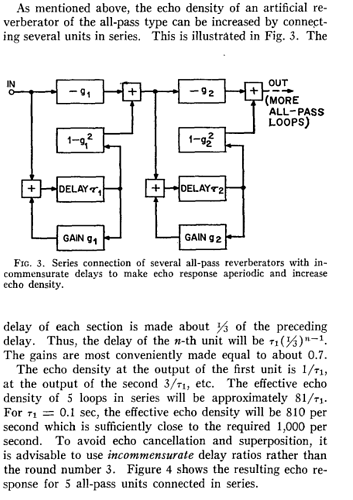Ive been trying to implement a reverberator described in M.R. Schroeders paper “Natural sounding artificial reverberation”, the one in particular described in this image.
Here is my source code.
(
f = {
arg in=SinOsc.ar()*Env.perc().kr, gain = 0.7, delTime=0.1;
var local, localout, out;
out = in * (-1 * gain);
local = LocalIn.ar(1) + in;
local = DelayN.ar(local,0.2,delTime);
localout = local * (1-(gain**2));
local = local * gain;
LocalOut.ar(local);
out = out + localout;
out
};
{
var temp = f.value(), del = 0.1;
4.do{
del = del / (3*rrand(0.98,1.02));
temp = f.value(temp, 0.7, del);
};
temp!2
}.play;
)
The problem is that when i play this, the first half second it sounds alright, but then it goes through the roof. Since the echo density of this reverberator is quite high, it seems quite logical that this might happen. But im sure that this was not the intention of Schroeder. So what am i doing wrong?
